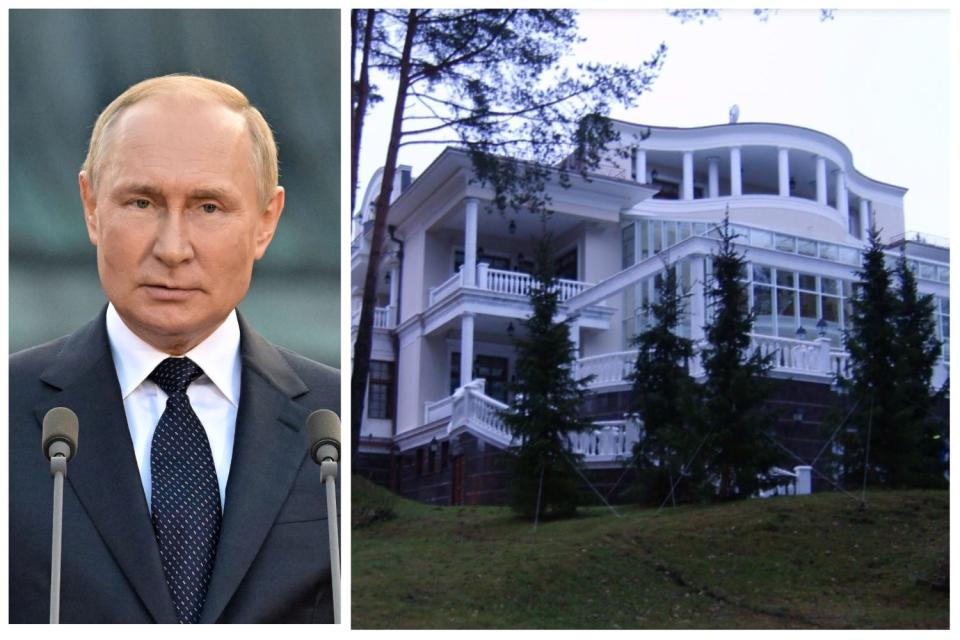Putin has ramped up air defenses at his palace to protect it from Ukrainian drones: report
- Oops!Something went wrong.Please try again later.
Russia has moved much-needed air defenses close to Putin's Valdai Palace, Radio Liberty reported.
The palace is said to be the residence of Putin's rumored girlfriend and children.
The move comes amid an ongoing campaign of Ukrainian drone strikes over western Russia.
Russia appears to be straining its air defenses to better protect one of President Vladimir Putin's palaces.
Russia has moved another air defense installation close to Putin's lakeside Valdai Palace to protect it from Ukrainian drones, Radio Liberty reported.
It concluded that the installation appeared in March 2024.
The Pantsir-S1 system is located on Ryabinovy Island, the outlet reported, about 3.3 miles from Putin's famed Valdai Palace complex.
According to investigative outlet Proekt, Valdai Palace is the home of Putin's rumored girlfriend, Alina Kabaeva, as of early 2023.

Putin has denied any connection to the property, but an investigation by the now-deceased opposition figure Alexei Navalny alleged presidential ties to the extensive luxury compound in 2021.
The Pantsir-S1 spotted by Radio Liberty is one of at least seven air defense installations placed within reach of the palace, according to the outlet.
It's unclear exactly when they all appeared, but most have been spotted since the start of Russia's full-scale invasion of Ukraine in 2022.
Business Insider was unable to independently verify the report.
An analysis by the Institute for the Study of War, which noted the Pantsir site at Valdai, said that Ukraine's ongoing drone strike campaign had pressured Russia into redistributing "limited" air defense assets over high-value locations.
"The Russian military apparently lacks the required conventional air defense systems to protect all critical facilities within western Russia and has even struggled to cover important potential targets in reportedly well-defended areas within Russia," the ISW wrote.
Ukraine has largely focused on Russia's oil infrastructure and military bases in a series of drone attacks that intensified at the start of this year.
In one such attack, on January 17, Ukraine sent a barrage of drones against a St Petersburg oil depot.
En route, one of the drones penetrated the airspace over the Valdai palace, Ukrainian officials claimed at the time.
A few days later, the Russian Telegram channel VChK-OGPU said that western Russia was struggling to find the technical means to fend off small, slow-moving objects like drones.
VChK-OGPU is a widely read channel that claims to have sources within Russia's state security services.
The channel also stated that since the start of the war, almost all of the region's Pantsir-S1s had been deployed to protect what it called a particularly important facility in Valdai.
According to the ISW, the resulting strains have had a knock-on effect on Russian enterprises and civilian regions.
"Continued pressures on Russia's air defense umbrella have led select regional authorities to explicitly state that Russian companies and local authorities cannot rely on federal-level Russian air defenses and need to provide for their own anti-drone capabilities," it said.
Russia, too, has waged a devastating campaign of drone strikes that have decimated Ukraine's power grid.
This is believed to be a consequence of the near-stalemate on the front lines, with both sides seeking to make deep strikes in place of being able to secure significant territorial gains.
Read the original article on Business Insider

